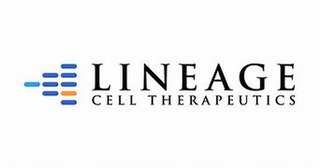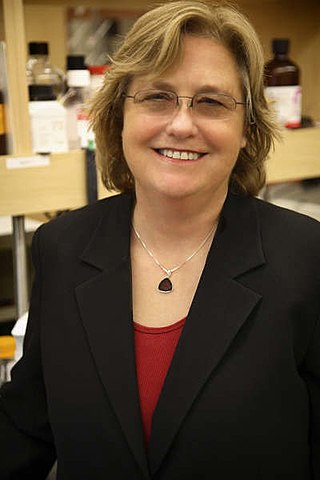Related Research Articles

In multicellular organisms, stem cells are undifferentiated or partially differentiated cells that can change into various types of cells and proliferate indefinitely to produce more of the same stem cell. They are the earliest type of cell in a cell lineage. They are found in both embryonic and adult organisms, but they have slightly different properties in each. They are usually distinguished from progenitor cells, which cannot divide indefinitely, and precursor or blast cells, which are usually committed to differentiating into one cell type.

The retina is the innermost, light-sensitive layer of tissue of the eye of most vertebrates and some molluscs. The optics of the eye create a focused two-dimensional image of the visual world on the retina, which then processes that image within the retina and sends nerve impulses along the optic nerve to the visual cortex to create visual perception. The retina serves a function which is in many ways analogous to that of the film or image sensor in a camera.
The development of the nervous system, or neural development (neurodevelopment), refers to the processes that generate, shape, and reshape the nervous system of animals, from the earliest stages of embryonic development to adulthood. The field of neural development draws on both neuroscience and developmental biology to describe and provide insight into the cellular and molecular mechanisms by which complex nervous systems develop, from nematodes and fruit flies to mammals.
Samuel Weiss is a Canadian neurobiologist.

Adult stem cells are undifferentiated cells, found throughout the body after development, that multiply by cell division to replenish dying cells and regenerate damaged tissues. Also known as somatic stem cells, they can be found in juvenile, adult animals, and humans, unlike embryonic stem cells.
Neuroepithelial cells, or neuroectodermal cells, form the wall of the closed neural tube in early embryonic development. The neuroepithelial cells span the thickness of the tube's wall, connecting with the pial surface and with the ventricular or lumenal surface. They are joined at the lumen of the tube by junctional complexes, where they form a pseudostratified layer of epithelium called neuroepithelium.
Neural stem cells (NSCs) are self-renewing, multipotent cells that firstly generate the radial glial progenitor cells that generate the neurons and glia of the nervous system of all animals during embryonic development. Some neural progenitor stem cells persist in highly restricted regions in the adult vertebrate brain and continue to produce neurons throughout life. Differences in the size of the central nervous system are among the most important distinctions between the species and thus mutations in the genes that regulate the size of the neural stem cell compartment are among the most important drivers of vertebrate evolution.

A progenitor cell is a biological cell that can differentiate into a specific cell type. Stem cells and progenitor cells have this ability in common. However, stem cells are less specified than progenitor cells. Progenitor cells can only differentiate into their "target" cell type. The most important difference between stem cells and progenitor cells is that stem cells can replicate indefinitely, whereas progenitor cells can divide only a limited number of times. Controversy about the exact definition remains and the concept is still evolving.
In biology, explant culture is a technique to organotypically culture cells from a piece or pieces of tissue or organ removed from a plant or animal. The term explant can be applied to samples obtained from any part of the organism. The extraction process is extensively sterilized, and the culture can be typically used for two to three weeks.
Neural tissue engineering is a specific sub-field of tissue engineering. Neural tissue engineering is primarily a search for strategies to eliminate inflammation and fibrosis upon implantation of foreign substances. Often foreign substances in the form of grafts and scaffolds are implanted to promote nerve regeneration and to repair damage caused to nerves of both the central nervous system (CNS) and peripheral nervous system (PNS) by an injury.

In cell biology, precursor cells—also called blast cells—are partially differentiated, or intermediate, and are sometimes referred to as progenitor cells. A precursor cell is a stem cell with the capacity to differentiate into only one cell type, meaning they are unipotent stem cells. In embryology, precursor cells are a group of cells that later differentiate into one organ. However, progenitor cells are considered multipotent.
The Food and Drug Administration (FDA) approved the first clinical trial in the United States involving human embryonic stem cells on January 23, 2009. Geron Corporation, a biotechnology firm located in Menlo Park, California, originally planned to enroll ten patients with spinal cord injuries to participate in the trial. The company hoped that GRNOPC1, a product derived from human embryonic stem cells, would stimulate nerve growth in patients with debilitating damage to the spinal cord. The trial began in 2010 after being delayed by the FDA because cysts were found on mice injected with these cells, and safety concerns were raised.

Lineage Cell Therapeutics, Inc. is a clinical-stage biotechnology company developing novel cell therapies for unmet medical needs. Lineage’s programs are based on its robust proprietary cell-based therapy platform and associated in-house development and manufacturing capabilities. With this platform Lineage develops and manufactures specialized, terminally differentiated human cells from its pluripotent and progenitor cell starting materials. These differentiated cells are developed to either replace or support cells that are dysfunctional or absent due to degenerative disease or traumatic injury or administered as a means of helping the body mount an effective immune response to cancer.

A neuronal lineage marker is an endogenous tag that is expressed in different cells along neurogenesis and differentiated cells such as neurons. It allows detection and identification of cells by using different techniques. A neuronal lineage marker can be either DNA, mRNA or RNA expressed in a cell of interest. It can also be a protein tag, as a partial protein, a protein or an epitope that discriminates between different cell types or different states of a common cell. An ideal marker is specific to a given cell type in normal conditions and/or during injury. Cell markers are very valuable tools for examining the function of cells in normal conditions as well as during disease. The discovery of various proteins specific to certain cells led to the production of cell-type-specific antibodies that have been used to identify cells.
Isabelle M. Germano is a neurosurgeon and professor of neurosurgery, neurology, and oncology at the Icahn School of Medicine at Mount Sinai Hospital. She is a Fellow of the American College of Surgeons and the American Association of Neurological Surgeons. Germano works with image-guided brain and spine surgery.

Jeanne Frances Loring is an American stem cell biologist, developmental neurobiologist, and geneticist. She is the founding Director of the Center for Regenerative Medicine and emeritus professor at the Scripps Research Institute in La Jolla, California. She has founded two biotechnology companies, Arcos BioScience (1999) and Aspen Neuroscience (2018)
Masayo Takahashi is a Japanese medical physician, ophthalmologist and stem cell researcher.

Cell-based therapies for Parkinson's disease include various investigational procedures which transplant specific populations of cells into the brains of people with Parkinson's disease. The investigation of cell transplantation therapies followed the discovery that the death of dopaminergic neurons in the substantia nigra pars compacta resulted in the motor symptoms of the disease. Thus, cell transplantation has focused on various dopamine producing cells throughout the body.

Stem cell therapy for macular degeneration is the use of stem cells to heal, replace dead or damaged cells of the macula in the retina. Stem cell based therapies using bone marrow stem cells as well as retinal pigment epithelial transplantation are being studied. A number of trials have occurred in humans with encouraging results.
Jane Caroline Sowden is a British biologist who is Professor of Developmental Biology and Genetics at the Great Ormond Street Hospital for Children NHS Foundation Trust. Her research investigates eye formation and repair by developing a better understanding the genetic pathways that regulate eye development.
References
- 1 2 3 "Sally Temple, Ph.D., Scientific Director - Neural Stem Cell Institute, Rensselaer NY". Neural Stem Cell Institute, Rensselaer NY. Retrieved 2015-11-19.
- 1 2 3 4 5 6 "Sally Temple - StemCulture". StemCulture. Retrieved 2015-11-19.
- 1 2 3 "Stem Cell Researcher Made University at Albany Citizen Laureate - University at Albany-SUNY". www.albany.edu. Retrieved 2015-11-19.
- 1 2 3 4 5 "Sally Temple — MacArthur Foundation". www.macfound.org. Retrieved 2015-11-19.
- ↑ "Jeffrey Stern - StemCulture". StemCulture. Retrieved 2015-11-20.
- ↑ "You searched for stem beads fgf2 - StemCulture". StemCulture. Retrieved 2015-11-20.
- ↑ "Speaker - Cell Symposia: Stem cells in modeling and treating disease, November 21 - 23, 2013 Cedars-Sinai Medical Center, Los Angeles, USA". www.cell-symposia-stemcells-modelingtreatingdisease.com. Archived from the original on 2015-11-20. Retrieved 2015-11-20.
- ↑ "Sally Temple on adult RPEs for vision impairment, IND, & more - The Niche". The Niche. 17 June 2015. Retrieved 2015-11-20.
- ↑ "Patents by Inventor Sally Temple Stern - Justia Patents Database". patents.justia.com. Retrieved 2015-11-20.